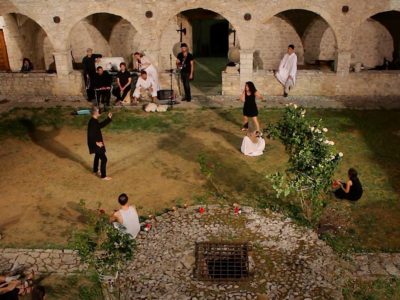Transplanisphere Method – Hyperlink performances: the exploration of a sample of our societies
Hyperlink performance: an ideal way to make everyone’s voices heard
You have prepared a great project allowing young people from all over Europe, or even the world, to meet, exchange and create together! Yes, but what? What results can we reasonably expect to achieve when we have to coordinate between 20 and 40 young people? Young people, who have 5 or 6 different mother tongues, with so many different cultural references and practices? How can we offer an equal place to each and every one? How can we make all these voices heard without leaving any out?
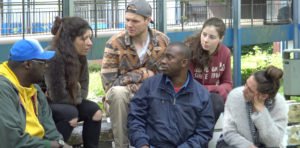
We think (and have experimented!) that a hyperlink play is an ideal solution!
We have all seen at least one film that uses this method: we follow several characters who, at first sight, would have nothing to do with each other, but who will be led to cross paths, or whose stories may evolve in parallel around the same theme. Yes, they do! Think of Inarritu’s 21 Grams or Babel, Tarantino’s Pulp Fiction, Robert Altman’s Short Cut or Gus Van Sant’s tragic Elephant…
It is thus interesting to be able to give equal importance to multiple characters, rather than having one main character. In this way, all participants can be involved in the creation in an equal way. This process also allows us to work in small groups, with each group working on a different plot. It is easier for the participants to express themselves in a small group. It is less intimidating and we are more likely to get everyone’s opinion or testimony.
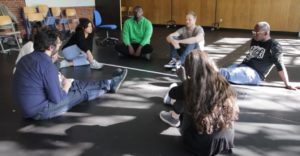
Feelings at the core of a hyperlink performance
For this kind of performance, the work on feelings is important! It prevails over the plot. From our point of view, this is an excellent way to stimulate a certain mind openness in young people. It is by slipping into the other person’s skin, by physically experiencing their story, that we come to understand them better. The principle of empathy in short! This takes us away from the Manichean point of view. No single hero, but a mosaic of personalities as a sample of humanity.
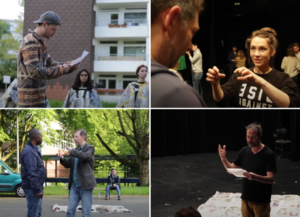
Interwoven plots to explore a sample of society
The result of this hyperlink performance is also an effective way of reaching the audience, which must be active. The audience has to make an effort to identify the link between the stories. They are satisfied when they understand the puzzle that links the different plots. The story will leave more of an impression on them as they recall the scenes in the play to find all the subtleties of the narrative.
According to Maxime Labrecque, in his thesis entitled Le film choral:
“One watches a choral film to be entertained, certainly, but above all to observe a microcosm, a sample of society and to be surprised by the multiple links that appear between the stories. […]
We are shown a few slices of life and we understand how important chance is. An unexpected encounter can create a chain reaction, making us aware that the world is small, that the degree of separation between each human being is infinitesimal.
Here is the aim of intercultural encounters summarised in an artistic production!
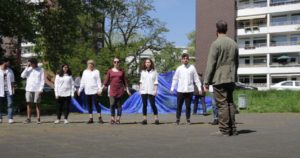
Trust Tour tools guiding you step by step in your creation
We, therefore, propose to guide you step by step, whether you are a professional or not, whether you come from the entertainment industry, from animation, from education… or not! Thanks to descriptive sheets and tutorial videos, we provide you with all the necessary tools to create a hyperlink performance, from the blank page to the first performance: writing workshop, transition to staging, rehearsal and performance. All you have to do is try it out!
So what story will you tell us?



